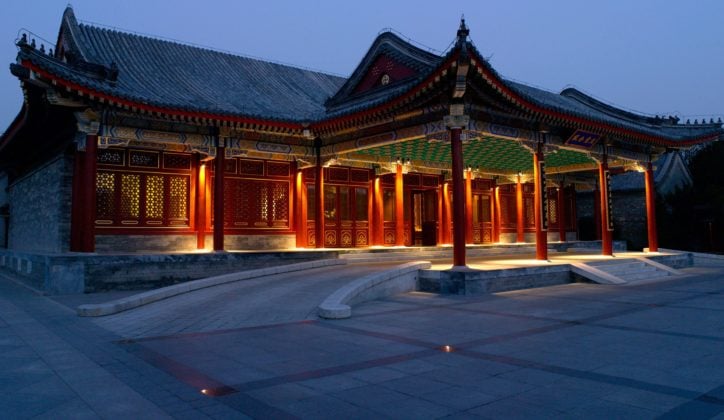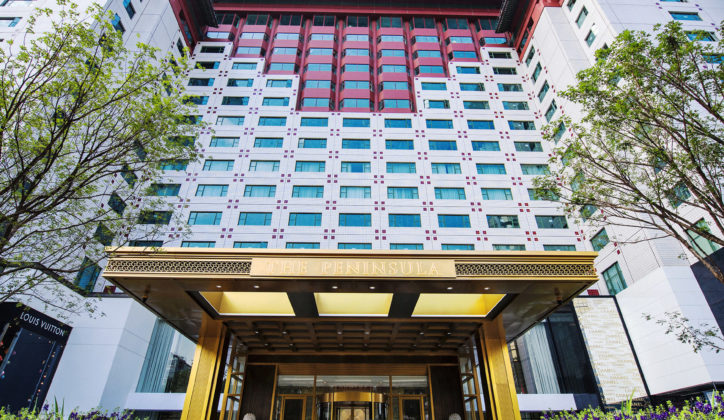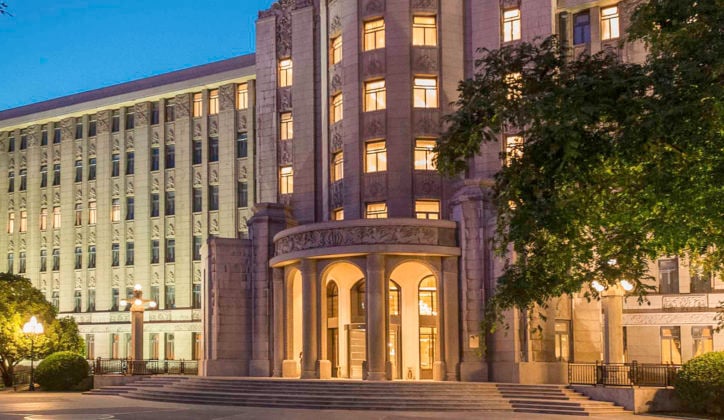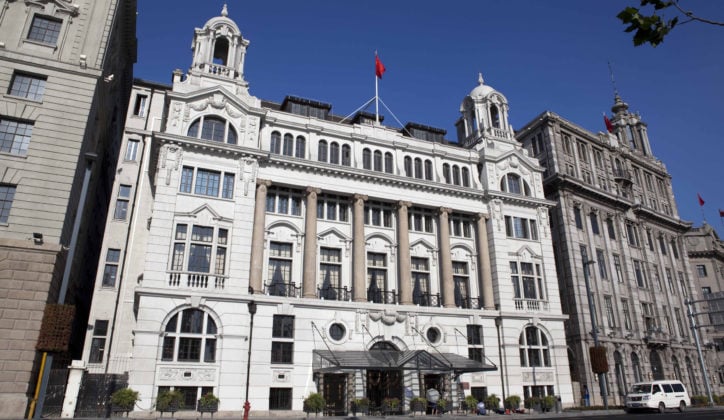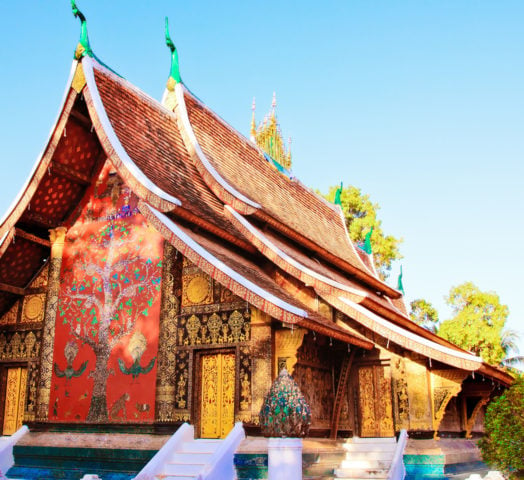From Beijing and Shanghai to Xi'an and Lijiang, discover China's unique and diverse past
Personalised journeys from start to finish
Every trip helps support Conservation
Every detail taken care of
Itinerary highlights
-
Walk the iconic Great Wall of China
-
Discover Lijiang's picture perfect, UNESCO World Heritage Site old town
-
Hike the serene Cangshan Mountain
-
Learn tai chi in Beijing's Temple of Heaven
-
Take the world’s fastest elevator up the Shanghai Tower for incredible city views
-
Discover the wonder of Xi'an's Terracotta Warriors
-
Let the Tiger Leaping Gorge take your breath away with its beauty
What's included
-
Luxury accommodation throughout
-
Full support from your travel designer and concierge before, during and after your trip
-
Private transfers
-
Expert guides in each destination
-
Our help with restaurant recommendations and reservations
-
Privately guided tours and experiences mentioned on this itinerary
At a glance
This is an epic exploration of China’s most beautiful, historic and iconic sights, mixed in with plenty of classes and experiences for you to truly learn about the incredible cultures found in this huge country.
Starting in Beijing, you’ll be stunned at the grandeur of the past palatial home to China’s emperors, The Forbidden City, before finding yourself at the most iconic of all Chinese sites of interest: the glorious Great Wall of China.
Flying over to Xi’an, you’ll walk the city walls before discovering the World famous Terracotta Warriors, giving you incredible visual insight into the beginnings of the Qin Empire. Next, you’ll head over to the picturesque towns of Dali and Shaxi where you’ll explore the charming old town, as well as the traditional Bai village of Xizhou, where you’ll learn how to make rushan cheese.
China’s historic and quaint towns are just part of the beauty of this country, so for some natural wonder, you’ll enjoy a hike up the incredibly scenic Cangshan Mountain before heading into Lijiang. Delve deeper into the Naxi culture at the Dongba Cultural Museum before visiting the quaint Yuhu Village found at the base of the marvellous Jade Dragon Snow Mountain. Get your cameras ready for a visit to the stunning Tiger Leaping Gorge, before flying over to your final destination: Shanghai.
In Shanghai you’ll get to know both the modern and the historic side of the city, with a visit to Xintiandi which is found hidden amid an infusion of upscale, modern developments. Take a tranquil stroll through the Yuyuan Garden followed by Shanghai’s Jewish Quarter, before ending your trip on the ultimate high, at the 546-metre tall observatory in the Shanghai Tower.
Example trip itinerary
Beijing
Transfer
Private transfer to your hotel
Accommodation in Beijing
Beijing
Overview
You’ll find The Opposite House to be a wonderful contradiction. Taking its name from the guesthouse which sits on the opposite side of a traditional courtyard home, the hotel blends old and new design elements seamlessly to create a throughly unique experience in the heart of Beijing’s Taikoo Li Sanlitun district.
The first thing you’re sure to notice is the hotel’s striking and modern emerald glass exterior, inspired by a traditional Chinese wood lattice. Chosen by eminent architect Kengo Kuma, it conveys calm while both reflecting the vibrant street life outside and providing a soft screen to those on the inside. 98 contemporary studios and a duplex penthouse benefit from the same clean and uncluttered design as are found in the hotel’s communal areas. Underfloor heating ensures rooms are always cosy while bathrooms are adorned with spa-inspired features, deep soak oak bath tubs and rain showers.
When you’re not busy discovering the stainless-steel pool – a masterpiece in lighting and atmosphere, you’ll enjoy exploring the hotel’s four restaurants and a cocktail bar. Venture outside of the hotel’s welcoming walls and you’ll find that you’re well placed to explore Beijing’s diplomatic quarter Sanlitun as well as the Unesco World heritage Hidden City, the Summer Palace and Temple of Heaven.
→ Find out moreBeijing
Overview
Step back into the time and land of the Chinese Ming Dynasty here at the regally ornate Aman Resort. Just moments from the UNESCO-protected Summer Palace, with a secret door leading directly to the iconic landmark, this property was once the guest quarters of the palace and so promises every touch of imperial indulgence.
Housed in authentic pavillions, the luxurious suites surround internal courtyards with traditional wooden screens and bamboo blinds adorning the guestrooms. A sense of tranquility and opulence prevails here and although tradition has been preserved, an impressive array of modern comforts can be sincerely enjoyed.
Three restaurants serve a range of Cantonese and international cuisine, the fabulous underground spa and pool ensure leisure is taken care of, while a cinema, library and yoga studio offer further lavish amenities.
→ Find out moreBeijing
Overview
Set close to the heart of Beijing, overlooking the striking Forbidden City which is recognised as the world’s largest palace, the Mandarin Oriental Beijing presents a luxurious, exclusive and memorable base in China’s fascinating capital.
The superb vantage point ensures that guests can enjoy incredible views throughout much of the hotel, with the nearby cityscape blessed by an architectural portfolio containing the likes of temples palaces, mansions and museums. Many of these views can be absorbed from the hotel’s 73 rooms and suites. Stylish and comfortable, the décor in the guest rooms and throughout the hotel blend contemporary design with authentic Chinese aesthetics.
Numerous dining experiences are on offer at the hotel, starting at the celebrated Café Z, serving culinary creations from a Michelin-star chef with a focus on Cantonese specialities, while the Mandarin Grill & Bar presents classic dishes such as steaks and seafood. For evening drinks, Mo Bar has an extensive cocktail and whisky list, while relaxed hot drinks are best enjoyed in The Library, a quiet place to pass the time over a tea or coffee.
For a touch of rest and relaxation after busy days wandering the historic and culture-rich streets of Beijing, the hotel is equipped with a superb spa. Boasting modern facilities offering a range of world-class treatments including traditional Chinese techniques, the spa is the perfect means for recharging your batteries.
→ Find out moreBeijing
Overview
Originally opened in 1989 as China’s first ever luxury hotel, the iconic Peninsula Beijing is today experiencing a second heyday after a significant renovation which took place in 2017. Doubling the size of all the hotel’s guest rooms, the Peninsula Beijing’s wonderful location, new décor and large suites have propelled it to once again becoming one of the city’s most rewarding hotels.
Set close to the Forbidden City, amid the business and shopping district, the hotel is the perfect luxury base for discovering Beijing. Splendid new décor and layouts are enjoyed throughout the hotel, with its high lobby ceilings, marble floors and grand staircase combined with Chinese artistry and craftmanship, alongside cutting-edge technological features. The 230 suites which populate the hotel are extremely spacious, with separate living areas, bathrooms and dressing rooms. Featuring a bespoke design, the vibe is a mixture of contemporary and classic Chinese styles, complete with striking furnishings and attractive artwork.
Three great dining options can be considered during a stay at the Peninsula Beijing, including Jing Restaurant with its delicious and contemporary French cuisine. Huang Ting brings an authentic and local identity with its Cantonese offerings, while The Peninsula Yun, with its rooftop setting, serves up modern Mediterranean sharing plates. Guests can also dine in The Lobby, renowned for its breakfast, brunch and afternoon tea service.
Further indulgence can be found in the Peninsula Spa, a luxurious sanctuary of wellness that offers everything from Chinese to Ayurvedic philosophies across its ten treatment rooms.
→ Find out more
Step inside the Forbidden City, a massive imperial palace once home to China’s emperors and the geographic center of this endless metropolis. The gates were shut to all but the royal household and their entourage of eunuchs and concubines for 600 years until, in 1924, a powerful warlord gave the last emperor just three hours to leave. Beyond the imposing red walls to the south lies Tiananmen Square, where, Chairman Mao, China’s most powerful ruler lies embalmed in a glass coffin within his own giant mausoleum.

Ask the residents of Beijing’s hutong alleyways, the crisscrossing mazes of courtyards and alleyways which make up the heart of the city, and they’ll tell you that anyone who lives further out isn’t really a Beijinger. You’ll see elders whiling away the night with a game of Chinese chess or mahjong, shopkeepers selling traditional snacks like jianbing (pancakes) and baozi (steamed buns), and hear calls announcing the arrival of the knife sharpener or cardboard collector. It is in these ancient neighborhoods where the capital’s distinct culture was generated and where it continues to thrive today.

Visit one of the great wonders of the world, the Great Wall. You will be brought to the Mutianyu section of the Great Wall, which is located in Huairou County a short way outside of Beijing. This section of the wall enjoys a special significance as it connects Juyongguan Pass in the west with the Gubeikou Great Wall in the east and was first built in the Northern Qi Dynasty between approximately 550 to 557 AD. You'll be accompanied by a historian who will give you insight into the fascinating creation of the Wall and bring to life the sheer scale and human effort that went into creating it.

In the early morning light you'll be brought to see the Temple of Heaven, a fascinating complex of temples and altars set in a park. During the Imperial Period the emperor and a magnificent procession of some 1,000 eunuchs, courtiers, and ministers would visit the temple twice a year. At the winter solstice the emperor would express thanks for the previous harvest, and then on the 15th day of the first month of the lunar year he would ask the gods of sun and moon, clouds and rain, and thunder and lightening to bless the coming harvest. Upon arrival here, you will take part in a tai chi class, before taking time to explore the temple.
Transfer
Private transfer to the airport
Flight
Flight to Xi'an
Transfer
Private transfer to your hotel
Xi'an
Accommodation in Xi'an
Xi'an
Overview
Opened in 1953 and originally serving as a state guesthouse, the Sofitel Legend Peoples Grand Hotel Xian is set within an iconic building of modern-day Xi’an, oozing French and Sino-Russian inspiration. Located within the ancient city walls, the hotel is ideally placed for discovering the many attractions of Xi’an, promising comfort and rejuvenation upon returning from busy day exploring the city’s 3,000 years of history.
The hotel’s 71 rooms, including 37 suites, are typically spacious, defined by high ceilings, elegant character and numerous art deco features and touches of French-style flair. Wonderful views of the pristine gardens or surrounding city are enjoyed from each room, while your own personal butler ensures all your requirements or requests will be met throughout your stay.
The hotel’s fantastic dining experiences are focused on the inviting Dolce Vita restaurant, serving up delicious Italian cuisine amid a stylish and sophisticated setting. Two bars provide the perfect avenue for evening refreshments, with the Lobby Lounge ideal for both cocktails and afternoon tea, while the classy Louis XIII Bar presents a more exclusive edge. Spa facilities are also on offer to make your stay even more indulgent, with three treatment rooms offering the likes of traditional Chinese foot massage.
→ Find out more
Ascending to an imperious height of 12 metres, the only way in or out of downtown Xi'an is to pass through cavernous openings in the oldest, largest, and best-preserved city wall in China. But the best way to experience the fortifications is by walking on top of them. The circuit is the best way to soak in views of the ancient city within and the modern metropolis outside.

Shaanxi Province is often considered the birthplace of Chinese civilisation. The capital of the empire three times, Xi'an played a major role in the history of the country. Today you will visit the Terracotta Warriors with your expert guide.
In 1974, a few farmers stumbled upon the warriors by accident, a mistaken discovery that ended up being one of the greatest archeological finds in history. Inspired into creation thanks to Qin Shi Huangdi's fear of malevolent spirits, this grand mausoleum houses the emperor's immense army of infantry men, archers and cavalry riders to protect him in the afterlife. Each of the warriors has a different face from a soldier during the Emperor's life.
The statues are viewable in three separate areas. Begin with pit number two (that is still being excavated) and three (that shelters the majority of items). You'll end with pit number one, the most impressive with about 2,000 warriors. There is also a small museum on site that houses two splendid bronze chariots found in 1980 west of the mausoleum.

Xi'an claims to be the birthplace of Chinese dumplings, and whether or not that’s true, local chefs have elevated the humble staple to the most sophisticated culinary heights. Head to Xi'an’s most popular dumpling joint where these little hand-pinched dough parcels of ground meat and vegetables are crafted into all shapes and sizes, and have a go yourself at making everybody's favorite Chinese snack.
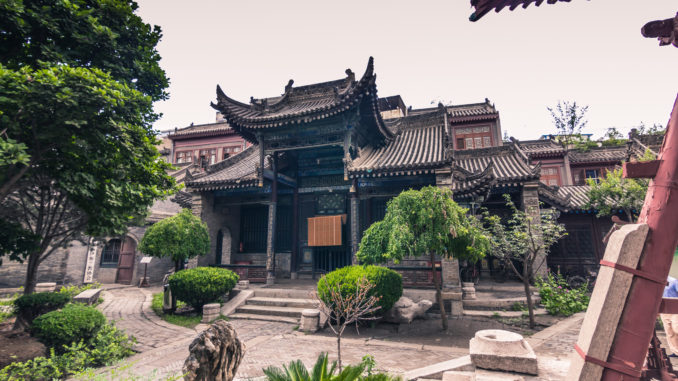
As Islam flowed along the Silk Road into China 1,300 years ago, its followers, both local and foreign alike, settled in a busy commercial area of the capital, Chang’an. After centuries of prosperity, the very same Muslim Quarter is still one of the most bustling areas of modern-day Xi’an, and a sensory feast of neon signs, exotic spices, and barbecued fare. Islam flourished around the Great Mosque in the heart of the Xi’an’s thriving Muslim Quarter. Entering the elegant grounds at sunset, you might mistake the undulating roofs and colonnaded halls for a Chinese temple until the evening call to prayer confirms that this is instead a potent fusion of Chinese and Islamic culture.
Transfer
Private transfer to the airport
Flight
Flight to Dali
Transfer
Private transfer to your hotel
Dali and Shaxi
Accommodation in Dali and Shaxi
Dali and Shaxi
Overview
Enjoying a good location close to the atmospheric old town of Shaxi, as well as presenting an authentic impression of local indigenous culture through its décor and design, Sunyata Shaxi Hotel is a charming and serene base in this culture-rich region of China.
Features such as the hotel’s Chinese garden and four striking courtyards, as well as numerous nods to caravan culture, perfectly demonstrate the life and times of the Tea and Horse Road, one of the Yunnan province’s most significant trade routes, of which Shaxi was a key component.
Warm woods, soothing earth tones and natural elements are present throughout the hotel, particularly the 21 guest rooms and suites. Light and airy, with simplistic design and décor based around wooden floors and beams, the guest rooms are comfortable havens to retreat to for a touch of relaxation during your time in Shaxi.
The hotel also provides some rewarding dining experiences, including delicious breakfasts and a number of local and authentic dishes which are served in the on-site restaurant.
→ Find out moreDali and Shaxi
Overview
A striking and cosy hotel set in the middle of the condensed ancient city of Dali, this micro-boutique space has the character of an enclosed and secluded retreat, ensuring a stay at Sunyata Hotel will provide rest and refuge from busy days exploring atmospheric Dali.
The hotel’s design and layout are the result of a leading architecture project, focused on creating a peaceful space and maximising impact within the area’s spatial limits. The result is a Zen village vibe, with each guest room resembling a micro-home of sorts. There are 14 cosy rooms in total occupying this unique space, all complete with chic and contemporary design features, with plenty of style, simplistic furnishings and little artistic features.
Charming and rewarding dining experiences are also a part of Sunyata Hotel’s offerings, with its fantastic on-site café-cum-restaurant serving up delicious and fresh food spanning numerous cuisines. Meanwhile, the hotel’s inviting central tea room proves the ideal setting for relaxation over a traditional mug of hot Chinese tea.
→ Find out more
Enter a world of traditional handicrafts and Bai architecture as you stroll along the cobbled streets of Dali Old Town. Protected from bandits and invaders by 6-meter-deep stone walls, Dali was once an important outpost on trade routes that spanned Tibet and Southeast Asia and has been the center of the Bai universe for more than a thousand years. Today, this charming checkerboard town of crisscrossing streams and lanes has become a popular stop off for travelers, and you’ll no doubt find yourself swept up in Dali’s irresistibly laid-back vibe as you wander its narrow lanes and sip tea in the tranquil surrounds of a traditional Bai courtyard home.
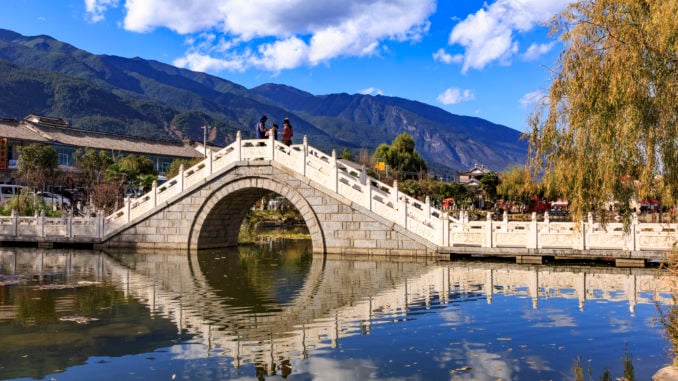
Today you'll walk through Xizhou, a traditional Bai village on the shores of Erhai Lake. You'll explore the markets, taking in some of the most beautiful buildings in the village, learning what makes Bai architecture unique. Along the way, you’ll stop for Xizhou pizza, a culinary treat that delights the taste buds of locals and travelers alike. Peer into the courtyards of white-walled mansions in the tranquil town of Xizhou. After exploring the wet market, get ready for an education in making rushan, a dried, cow’s milk cheese which is rolled and fried before eating, and chow down on this delicious, if indulgent, local snack.

A resplendent artisan village resting at the base of Cangshan Mountain, Zhoucheng is a major center of Bai culture renowned for its unique tie-dye products. You’ll see up close how the locals use indigo-based dyes to transform white cotton fabric into a dazzling variety of patterns and scenes, using the same simple stick tools and rubber bands as their predecessors centuries before.
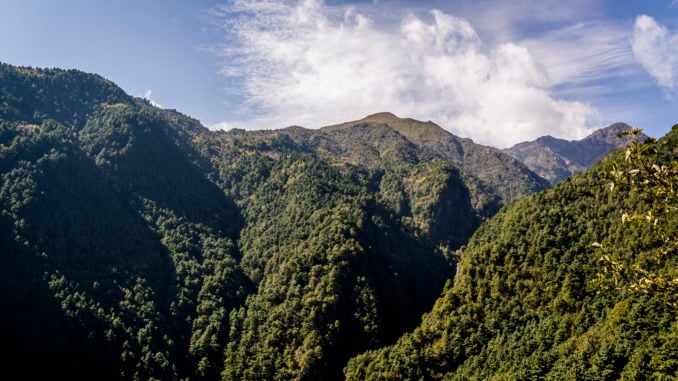
To the west of Dali rises Cangshan mountain, a collection of 3,500m peaks which offer epic views of the town and lake sprawling through the valley below. Only in 1991 did construction begin on the Jade Cloud Road, a paved and sometimes precipitous walkway which leads you high up the mountain, past waterfalls and through secluded temples. The hike usually takes around 2 hours with an opportunity to camp for the most intrepid.

Travel to Shaxi, a beautifully preserved market town nestled in the idyllic rural landscape halfway between Lijiang and Dali. The town was once a bustling outpost where horses and tea, among other exotic goods, changed hands en route to Burma and Tibet. With Buddhist grottoes, lively weekend markets, and delightfully simple rural cuisine sourced straight from the surrounding farmland, Shaxi is packed with cultural intrigue and pastoral charm.
Transfer
Private transfer to Lijiang
Transfer
Private transfer to your hotel
Lijiang
Accommodation in Lijiang
Lijiang
Overview
Found at the foot of the fantastically named Jade Dragon Snow Mountain, Banyan Tree Lijiang decorates the already mesmerizing landscape. Its regal combination of traditional style buildings and modern-day luxury perfectly evoke a romanticised sense of a bygone kingdom; specifically that of the Nashi (also sometimes referred to as Nakhi) people.
Rooms here are palatial in their own right, borrowing from elements of Nashi architecture such as perfect symmetry, elegant pillars and subtly carved poles. Here you can absorb panoramic views of the legendary Jade Dragon Snow Mountains from your plush king-sized bed, as well as bask in the beauty of your carefully tended private gardens, relax in the private outdoor heated pools and individually tailor your comfort with a thoughtful pillow menu. Rooms are decorated with dark woods and red hues, known in China as the traditional symbolic colour of happiness, and a stay here is sure to instil such a thing.
Dining here is just as perfected as the hotel’s aesthetic, atmosphere and luxury. Here you can indulge in the best of the local cuisine in the hotel’s two restaurants, or enjoy a unique gourmet dining experience in a pagoda under the moonlight.
Here you can indulge the senses at the Banyan Tree Spa, enjoy a class of yoga, along with a range of guided tours of Lijiang by both bike and foot, or revitalize with a game of tennis on the on-site courts that benefit from a breathtaking backdrop of the mountains.
Guests can also visit the Banyan Tree Gallery, which is filled with an enchanting collection of handicrafts, resort apparel and signature spa amenities, letting you take a little piece of this tranquil paradise home with you.
→ Find out moreLijiang
Overview
Amandayan can been found atop Lion Hill in the heart of Lijiang. While it is leading the way in bringing 21st-century luxuries to Lijiang, such as a private cinema and modern outdoor pool, Amandayan feels every bit a part of the Old Town as the charming historical bridges and cobbled streets found here.
Guests can relax in its tranquil courtyards and traditionally designed suites with wooden features and intricate carvings made from local Yunnan pine and Dong Bei elm, fully in keeping with the Nakhi people’s use of timber for construction and art.
It offers three styles of suite, with 35 suites in total, all of which offer their own courtyard or terrace from which you can enjoy the mesmerising views of Lijiang’s rooftops, Lion Hill, the Old Town and the majestic mountains in the background.
After working up an appetite exploring the wonders of Lijiang, head Amandayan’s main restaurant, Man Yi Xuan, where you can delight in Nakhi cuisine, created locally grown ingredients. For a delightful immersion into the world of Chinese tea, head to the Tea House where you can indulge in an assortment of teas as well as dim sum, sandwiches, cakes and pastries both indoors and out with views of Lijiang’s old town.
To achieve full body relaxation, head to the Aman Spa where you can indulge in a selection of traditional Chinese therapies. If you are feeling active, the spa also has a 20-metre heated pool, a fully equipped gym and Pilates studio.
→ Find out more
Defined by an intricate network of canals and cobbled lanes, the atmospheric Lijiang Old Town constitutes a dreamlike scene, and it is that charm, along with its inscription onto UNESCO’s World Heritage List in 1997, that makes this town such a popular and rewarding attraction in China. You will be met in the morning by your guide for a tour of the Old Town, taking you down some of the quieter lanes before they fill with visitors. While here, you can mingle with local Naxi people, descendants of Tibetan tribes.

Dive into the detail of Naxi culture with a quick stop at the small but excellent exhibits of the Dongba Cultural Museum. Your expert guide will use the collection’s artifacts to illustrate the history of trade routes which spread all the way through Burma to India. But the undisputed highlight, is the Naxi script itself, a system of picture writing so creative that some texts can only be understood by whoever who wrote it.

A 30-minute drive from the center of Lijiang, Yuhu Village is a small community at the base of Jade Dragon Snow Mountain. There, you'll visit the home of Joseph Rock, famed Austrian-American botanist, explorer, and chronicler of the Naxi people. Yuhu’s stone buildings represent a unique architectural style, their windows overlooking pristine alpine meadows, summits rising in the distance.

Legend has it that whilst fleeing a hunter through the mountains of northern Yunnan, a tiger leapt across the raging rapids blocking its escape. This is how Tiger Leaping Gorge got its name, but its reputation comes from epic hiking trails shared with local shepherds and farmers that deliver views of outstanding natural beauty below. The hike is not for the fainthearted, after all, this is one of the deepest gorges in the world at 3,790 meters deep.
Transfer
Private transfer to the airport
Flight
Flight to Shanghai
Transfer
Private transfer to your hotel
Shanghai
Accommodation in Shanghai
Shanghai
Overview
Aptly found in the middle of Shanghai in a historic lane-house location, The Middle House offers guests a luxurious space which epitomises urban sophistication. It provides a much needed oasis, with its abundance of outdoor terraces, amidst the bustling backdrop of one of China’s largest city.
The design of the hotel was inspired by the city’s rich heritage of craftsmanship, and combines a minimalist style with various modern interpretations of traditional Chinese elements. Here you will find a varied collection of four studios, a Gallery Suite and a Penthouse Suite. All offer a complimentary Maxi Bar, as well as generous-sized windows with stunning views of the city, while some boast private outdoor spaces to allow you to immerse yourself in the Shanghai skyline.
Food lovers can delight in the vast range of restaurants, bars and international cuisine here. For contemporary Italian cuisine and a selection of fine wines there’s no better place than the casual yet sophisticated Frasca Italian Restaurant. However if you wish to explore China’s culinary highlights head to Sui Tang Li where you can indulge in authentic Chinese cuisine inspired by Cantonese, Sichuan and of course, Shanghainese delicacies. Meanwhile, Cafe Grey Deluxe showcases seasonal ingredients and is the perfect spot to grab breakfast or a cocktail at sunset on its beautiful terrace.
→ Find out more
Shanghai
Overview
As the only new building on Shanghai’s historic and famous street, The Bund, The Peninsula Shanghai stands out among the rest as a beacon of modern luxury.
A truly modern and luxurious Art Deco masterpiece, all rooms are thoroughly elegant in design with neutral tones, accent colours and luxurious fabrics. Some rooms offer unparalleled views of the Huangpu River and the ever-changing skyline of Pudong, while others offer soothing green vistas of trees, overlooking the historic Wai Bai Du iron bridge among other skyline highlights.
Wining and dining here are guarantee to delight, from dining on Modern European cuisine under chandeliers at the glamourous Michelin-starred Sir Elly’s Restaurant to all day international cuisine at The Lobby, as well as a range of sophisticated drinks to be enjoyed at the 1920’s inspired bar Salon De Ning.
Guests can wind away a day of sightseeing, by resting both the mind and body at the Art Deco-themed Peninsula Spa which offers a range of holistic healing treatments and modern therapies.
Wake up feeling refreshed with laps or a leisurely dip in the indoor heated swimming pool, which boasts an adjoining roof terrace with stunning views of the city.
→ Find out moreShanghai
Overview
The Waldorf Astoria Shanghai, found in the prime waterfront location on the Bund, just five minutes away from Nanjing Road and the tranquil Yu Garden, truly boasts an old-world glamour. This glamour is no doubt derived from its careful restoration and origins in the Shanghai Club, built in 1911, which was known for its neo-classical style and architecture.
Here you will find 260 luxurious guest rooms and suites which blend old-world charm with a modern edge. Each room has marble-finished spacious bathrooms and services include a personal concierge who shall anticipate your every wish.
Waldorf Astoria’s Pelham Restaurant is a fantastic option for fine dining, where you can indulge in French cuisine or regional Chinese cuisine. For after meal drinks, head to the historic and award-winning Long Bar, which offers beautiful sweeping vistas of the river and a varied and exotic drinks menu.
For quick refreshments throughout the day, visit the tranquil Library Lounge where you shall always find free coffee, tea and snacks.
This city is known for its high energy, however if you run out of yours after a busy day of exploring, head to the heated indoor pool and flick through the vast menu of restorative treatments at the stunning Waldorf Astoria Spa.
→ Find out moreShanghai
Overview
Set on the outskirts of downtown Shanghai, surrounded by verdant camphor trees in a pristine setting of ecological focus, Amanyangyun is the striking result of an ambitious architectural undertaking. Involving the restoration of 13 Ming and Qing dynasty villas, moved brick-by-brick from the southern city of Fuzhou, guests are offered a fascinating glimpse into China’s past, all amid comfort and luxury.
In addition to the 13 antique villas, there are also 24 contemporary suites, which include the likes of living areas with a fireplace, private courtyards and outdoor bathtubs. The villas range from one to five bedrooms and benefit from exclusive use of the villa area’s pool, Jacuzzi and garden. Throughout the villas and suites, guests will enjoy a refined contemporary design, alongside a nature-inspired aesthetic that achieves peaceful seclusion.
An extensive range of dining options are on offer at the hotel, with delicious Chinese dishes provided by Lazhu, sumptuous Italian fare served by ARVA and tasty Japanese cuisine the focus of NAMA. For refreshments and the likes of afternoon tea, The Bar is the ideal venue, while the Cigar Lounge presents premium drinks and light meals.
Amanyangyun’s huge spa and wellness complex can be found set around the central courtyard, complete with countless treatment rooms, relaxation lounges, pools, a fitness centre and a pilates and yoga studio. For something slightly different, Nanshufang is the hotel’s cultural hub, presenting a space for contemplation, as well as discovery of Chinese traditions such as tea ceremonies, calligraphy lessons and brush painting.
→ Find out more
A vestige of the French colonial era, Fuxing was once a private Ming Dynasty park that is now the beating heart of Shanghai’s local life. Boasting some of China’s best people watching opportunities, keep an eye out for ensembles of locals singing songs en masse (of varying talent), ballroom dancing, or even the occasional saxophone quartet.
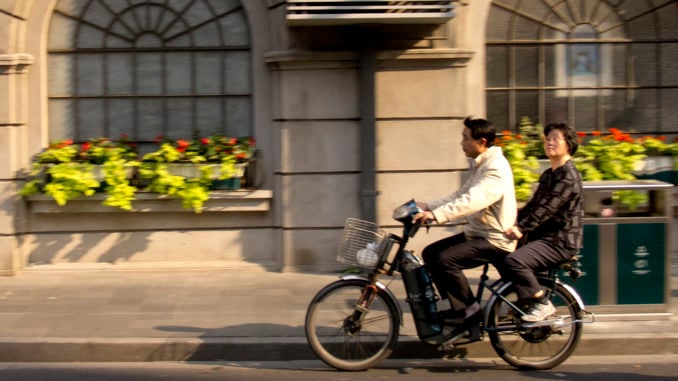
Shanghai’s former French concession represents every aspect of the city’s short but tumultuous history. This guided walk is your chance to dip in and out of its modern boutiques and chic cafes, and witness the local bike fixers, propaganda art, street tailors and dumpling hawkers that have been there much longer. The area was governed by France but was populated by a cosmopolitan mix of the city's wealthy political elites. Your local guide will lead you through the old lanes still lined with Russian churches, British townhouses and even French châteaux.

Xintiandi still bears the traces of an older Shanghai, hidden amidst an infusion of upscale, modern developments. Housed behind its restored facades are international restaurants, boutiques, cafes, and bars. The neighbourhood brings together the heady, glamorous atmosphere of decades gone by and the comforts of a modern city. You'll explore the area on foot, strolling through sights new and old.

Manufacturing and mega-cities may be the name card of today’s China, but Yuyuan Garden is a postcard example of a more traditional side to the country, one of beautifully manicured gardens, punctuated with rocks and trees, interspersed with green ponds and framed by white walls with circular doorways. Built in what is now downtown Shanghai by a Ming Dynasty official, Yuyuan Garden’s pavilions and bridges, rockeries and teahouse, will transport you to a world far away from skyscrapers and bullet trains.

Sat in People’s Square and shaped like an enormous ancient Chinese cooking vessel, the Shanghai Museum delivers on the inside everything that its bold and confident design promises on the outside. In world-class exhibitions, you’ll learn how huge 3,000-year-old bronze wine vessels can be poured using just one hand, and why ancient history was recorded inside cooking pots. Shanghai Museum’s extensive collection cover everything from bronze, jade, and ceramics to calligraphy, painting, and furniture, meaning whatever your taste in Chinese antiquities, there will be something for you.

Uncover the veiled stories of Shanghai's Jewish Quarter, which went from burgeoning business center and political haven to windswept ghost town in a matter of decades.

The world’s fastest elevator can take you to the 546-meter high observatory on the 118th floor of Shanghai Tower, where you will have a 360-degree bird’s-eye view of Shanghai’s renowned buildings, natural beauties and ever-changing sky. China is a land of superlatives and nowhere exemplifies the extremes of this country better than the record-breaking Shanghai skyline. Ride the world’s fastest elevator to the world’s highest observation deck in China’s tallest building and feel yourself blown away by awe-inspiring views of one of the planet’s largest cities, all while learning about the architecture which Makes these gravity-defying feats of engineering possible.
Transfer
Maglev levitating train to Shanghai airport
We design private journeys for people who wish to go beyond the typical and experiencing something truly special. Our amazing team of travel designers, concierges and local guides work together to create unique journeys that get deep under the skin of where you’re visiting.
Get in touch
The Culture, History and Heritage of China
How we work
This is an epic exploration of China’s most beautiful, historic and iconic sights, mixed in with plenty of classes and experiences for you to truly learn about the incredible cultures found in this huge country. Starting in Beijing, you’ll be stunned at the grandeur of the past palatial home to China’s emperors, The Forbidden City, before finding yourself at the most iconic of all Chinese sites of interest: the glorious Great Wall of China. Flying over to Xi’an, you’ll walk the city walls before discovering the World famous Terracotta Warriors, giving you incredible visual insight into the beginnings of the Qin Empire. Next, you’ll head over to the picturesque towns of Dali and Shaxi where you’ll explore the charming old town, as well as the traditional Bai village of Xizhou, where you’ll learn how to make rushan cheese. China’s historic and quaint towns are just part of the beauty of this country, so for some natural wonder, you’ll enjoy a hike up the incredibly scenic Cangshan Mountain before heading into Lijiang. Delve deeper into the Naxi culture at the Dongba Cultural Museum before visiting the quaint Yuhu Village found at the base of the marvellous Jade Dragon Snow Mountain. Get your cameras ready for a visit to the stunning Tiger Leaping Gorge, before flying over to your final destination: Shanghai. In Shanghai you’ll get to know both the modern and the historic side of the city, with a visit to Xintiandi which is found hidden amid an infusion of upscale, modern developments. Take a tranquil stroll through the Yuyuan Garden followed by Shanghai’s Jewish Quarter, before ending your trip on the ultimate high, at the 546-metre tall observatory in the Shanghai Tower. | Whats included?
|
Days 1-4 |
Beijing |
|
Flights & transfers
Private transfer to your hotel |
|
|
Accommodation in Beijing
•
The Opposite House - $$$$$
You’ll find The Opposite House to be a wonderful contradiction. Taking its name from the...
•
Aman Resort at Summer Palace - $$$$$
Step back into the time and land of the Chinese Ming Dynasty here at the regally ornate Aman...
•
Mandarin Oriental Beijing - $$$$$
Set close to the heart of Beijing, overlooking the striking Forbidden City which is recognised...
•
Peninsula Beijing - $$$$$
Originally opened in 1989 as China’s first ever luxury hotel, the iconic Peninsula Beijing...
|
|
| The Forbidden City Step inside the Forbidden City, a massive imperial palace once home to China’s emperors and the geographic center of this endless metropolis. The gates were shut to all but the royal household and their entourage of eunuchs and concubines for 600 years until, in 1924, a powerful warlord gave the last emperor just three hours to leave. Beyond the imposing red walls to the south lies Tiananmen Square, where, Chairman Mao, China’s most powerful ruler lies embalmed in a glass coffin within his own giant mausoleum. |
|
| Beijing's ancient neighborhoods Ask the residents of Beijing’s hutong alleyways, the crisscrossing mazes of courtyards and alleyways which make up the heart of the city, and they’ll tell you that anyone who lives further out isn’t really a Beijinger. You’ll see elders whiling away the night with a game of Chinese chess or mahjong, shopkeepers selling traditional snacks like jianbing (pancakes) and baozi (steamed buns), and hear calls announcing the arrival of the knife sharpener or cardboard collector. It is in these ancient neighborhoods where the capital’s distinct culture was generated and where it continues to thrive today. |
|
| The Great Wall of China Visit one of the great wonders of the world, the Great Wall. You will be brought to the Mutianyu section of the Great Wall, which is located in Huairou County a short way outside of Beijing. This section of the wall enjoys a special significance as it connects Juyongguan Pass in the west with the Gubeikou Great Wall in the east and was first built in the Northern Qi Dynasty between approximately 550 to 557 AD. You'll be accompanied by a historian who will give you insight into the fascinating creation of the Wall and bring to life the sheer scale and human effort that went into creating it. |
|
| Temple of Heaven and Tai Chi In the early morning light you'll be brought to see the Temple of Heaven, a fascinating complex of temples and altars set in a park. During the Imperial Period the emperor and a magnificent procession of some 1,000 eunuchs, courtiers, and ministers would visit the temple twice a year. At the winter solstice the emperor would express thanks for the previous harvest, and then on the 15th day of the first month of the lunar year he would ask the gods of sun and moon, clouds and rain, and thunder and lightening to bless the coming harvest. Upon arrival here, you will take part in a tai chi class, before taking time to explore the temple. |
|
|
Flights & transfers
Private transfer to the airport |
|
| Flight to Xi'an | |
| Private transfer to your hotel | |
Days 4-6 |
Xi'an |
|
Accommodation in Xi'an
•
Sofitel Legend Peoples Grand Hotel Xian - $$$$$
Opened in 1953 and originally serving as a state guesthouse, the Sofitel Legend Peoples Grand...
|
|
| Xi'an city wall Ascending to an imperious height of 12 metres, the only way in or out of downtown Xi'an is to pass through cavernous openings in the oldest, largest, and best-preserved city wall in China. But the best way to experience the fortifications is by walking on top of them. The circuit is the best way to soak in views of the ancient city within and the modern metropolis outside. |
|
| The Terracotta Warriors Shaanxi Province is often considered the birthplace of Chinese civilisation. The capital of the empire three times, Xi'an played a major role in the history of the country. Today you will visit the Terracotta Warriors with your expert guide. In 1974, a few farmers stumbled upon the warriors by accident, a mistaken discovery that ended up being one of the greatest archeological finds in history. Inspired into creation thanks to Qin Shi Huangdi's fear of malevolent spirits, this grand mausoleum houses the emperor's immense army of infantry men, archers and cavalry riders to protect him in the afterlife. Each of the warriors has a different face from a soldier during the Emperor's life. The statues are viewable in three separate areas. Begin with pit number two (that is still being excavated) and three (that shelters the majority of items). You'll end with pit number one, the most impressive with about 2,000 warriors. There is also a small museum on site that houses two splendid bronze chariots found in 1980 west of the mausoleum. |
|
| Chinese dumpling tasting Xi'an claims to be the birthplace of Chinese dumplings, and whether or not that’s true, local chefs have elevated the humble staple to the most sophisticated culinary heights. Head to Xi'an’s most popular dumpling joint where these little hand-pinched dough parcels of ground meat and vegetables are crafted into all shapes and sizes, and have a go yourself at making everybody's favorite Chinese snack. |
|
| Muslim Quarter and the Great Mosque As Islam flowed along the Silk Road into China 1,300 years ago, its followers, both local and foreign alike, settled in a busy commercial area of the capital, Chang’an. After centuries of prosperity, the very same Muslim Quarter is still one of the most bustling areas of modern-day Xi’an, and a sensory feast of neon signs, exotic spices, and barbecued fare. Islam flourished around the Great Mosque in the heart of the Xi’an’s thriving Muslim Quarter. Entering the elegant grounds at sunset, you might mistake the undulating roofs and colonnaded halls for a Chinese temple until the evening call to prayer confirms that this is instead a potent fusion of Chinese and Islamic culture. |
|
|
Flights & transfers
Private transfer to the airport |
|
| Flight to Dali | |
| Private transfer to your hotel | |
Day 6-9 |
Dali and Shaxi |
|
Accommodation in Dali and Shaxi
•
Sunyata Hotel Shaxi - $$$$$
Enjoying a good location close to the atmospheric old town of Shaxi, as well as presenting an...
•
Sunyata Hotel - $$$$$
A striking and cosy hotel set in the middle of the condensed ancient city of Dali, this...
|
|
| Dali Old Town Enter a world of traditional handicrafts and Bai architecture as you stroll along the cobbled streets of Dali Old Town. Protected from bandits and invaders by 6-meter-deep stone walls, Dali was once an important outpost on trade routes that spanned Tibet and Southeast Asia and has been the center of the Bai universe for more than a thousand years. Today, this charming checkerboard town of crisscrossing streams and lanes has become a popular stop off for travelers, and you’ll no doubt find yourself swept up in Dali’s irresistibly laid-back vibe as you wander its narrow lanes and sip tea in the tranquil surrounds of a traditional Bai courtyard home. |
|
| Xizhou visit with rushan making class Today you'll walk through Xizhou, a traditional Bai village on the shores of Erhai Lake. You'll explore the markets, taking in some of the most beautiful buildings in the village, learning what makes Bai architecture unique. Along the way, you’ll stop for Xizhou pizza, a culinary treat that delights the taste buds of locals and travelers alike. Peer into the courtyards of white-walled mansions in the tranquil town of Xizhou. After exploring the wet market, get ready for an education in making rushan, a dried, cow’s milk cheese which is rolled and fried before eating, and chow down on this delicious, if indulgent, local snack. |
|
| Zhoucheng A resplendent artisan village resting at the base of Cangshan Mountain, Zhoucheng is a major center of Bai culture renowned for its unique tie-dye products. You’ll see up close how the locals use indigo-based dyes to transform white cotton fabric into a dazzling variety of patterns and scenes, using the same simple stick tools and rubber bands as their predecessors centuries before. |
|
| Cangshan mountain hike To the west of Dali rises Cangshan mountain, a collection of 3,500m peaks which offer epic views of the town and lake sprawling through the valley below. Only in 1991 did construction begin on the Jade Cloud Road, a paved and sometimes precipitous walkway which leads you high up the mountain, past waterfalls and through secluded temples. The hike usually takes around 2 hours with an opportunity to camp for the most intrepid. |
|
| One night in Shaxi Travel to Shaxi, a beautifully preserved market town nestled in the idyllic rural landscape halfway between Lijiang and Dali. The town was once a bustling outpost where horses and tea, among other exotic goods, changed hands en route to Burma and Tibet. With Buddhist grottoes, lively weekend markets, and delightfully simple rural cuisine sourced straight from the surrounding farmland, Shaxi is packed with cultural intrigue and pastoral charm. |
|
|
Flights & transfers
Private transfer to Lijiang |
|
| Private transfer to your hotel | |
Days 9-12 |
Lijiang |
|
Accommodation in Lijiang
•
Banyan Tree Lijiang - $$$$$
Found at the foot of the fantastically named Jade Dragon Snow Mountain, Banyan Tree Lijiang...
•
Amandayan - $$$$$
Amandayan can been found atop Lion Hill in the heart of Lijiang. While it is leading the way...
|
|
| Lijiang's Old Town Defined by an intricate network of canals and cobbled lanes, the atmospheric Lijiang Old Town constitutes a dreamlike scene, and it is that charm, along with its inscription onto UNESCO’s World Heritage List in 1997, that makes this town such a popular and rewarding attraction in China. You will be met in the morning by your guide for a tour of the Old Town, taking you down some of the quieter lanes before they fill with visitors. While here, you can mingle with local Naxi people, descendants of Tibetan tribes. |
|
| Dongba Cultural Museum Dive into the detail of Naxi culture with a quick stop at the small but excellent exhibits of the Dongba Cultural Museum. Your expert guide will use the collection’s artifacts to illustrate the history of trade routes which spread all the way through Burma to India. But the undisputed highlight, is the Naxi script itself, a system of picture writing so creative that some texts can only be understood by whoever who wrote it. |
|
| Yuhu Village A 30-minute drive from the center of Lijiang, Yuhu Village is a small community at the base of Jade Dragon Snow Mountain. There, you'll visit the home of Joseph Rock, famed Austrian-American botanist, explorer, and chronicler of the Naxi people. Yuhu’s stone buildings represent a unique architectural style, their windows overlooking pristine alpine meadows, summits rising in the distance. |
|
| Tiger Leaping Gorge Legend has it that whilst fleeing a hunter through the mountains of northern Yunnan, a tiger leapt across the raging rapids blocking its escape. This is how Tiger Leaping Gorge got its name, but its reputation comes from epic hiking trails shared with local shepherds and farmers that deliver views of outstanding natural beauty below. The hike is not for the fainthearted, after all, this is one of the deepest gorges in the world at 3,790 meters deep. |
|
|
Flights & transfers
Private transfer to the airport |
|
| Flight to Shanghai | |
| Private transfer to your hotel | |
Days 12-15 |
Shanghai |
|
Accommodation in Shanghai
•
The Middle House - $$$$$
Aptly found in the middle of Shanghai in a historic lane-house location, The Middle House...
•
Peninsula Shanghai - $$$$$
As the only new building on Shanghai’s historic and famous street, The Bund, The Peninsula...
•
Waldorf Astoria Shanghai - $$$$$
The Waldorf Astoria Shanghai, found in the prime waterfront location on the Bund, just five...
•
Amanyangyun - $$$$$
Set on the outskirts of downtown Shanghai, surrounded by verdant camphor trees in a pristine...
|
|
| Fuxing Park A vestige of the French colonial era, Fuxing was once a private Ming Dynasty park that is now the beating heart of Shanghai’s local life. Boasting some of China’s best people watching opportunities, keep an eye out for ensembles of locals singing songs en masse (of varying talent), ballroom dancing, or even the occasional saxophone quartet. |
|
| The French Concession Shanghai’s former French concession represents every aspect of the city’s short but tumultuous history. This guided walk is your chance to dip in and out of its modern boutiques and chic cafes, and witness the local bike fixers, propaganda art, street tailors and dumpling hawkers that have been there much longer. The area was governed by France but was populated by a cosmopolitan mix of the city's wealthy political elites. Your local guide will lead you through the old lanes still lined with Russian churches, British townhouses and even French châteaux. |
|
| Xintiandi Xintiandi still bears the traces of an older Shanghai, hidden amidst an infusion of upscale, modern developments. Housed behind its restored facades are international restaurants, boutiques, cafes, and bars. The neighbourhood brings together the heady, glamorous atmosphere of decades gone by and the comforts of a modern city. You'll explore the area on foot, strolling through sights new and old. |
|
| Yuyuan Garden Manufacturing and mega-cities may be the name card of today’s China, but Yuyuan Garden is a postcard example of a more traditional side to the country, one of beautifully manicured gardens, punctuated with rocks and trees, interspersed with green ponds and framed by white walls with circular doorways. Built in what is now downtown Shanghai by a Ming Dynasty official, Yuyuan Garden’s pavilions and bridges, rockeries and teahouse, will transport you to a world far away from skyscrapers and bullet trains. |
|
| Shanghai Museum Sat in People’s Square and shaped like an enormous ancient Chinese cooking vessel, the Shanghai Museum delivers on the inside everything that its bold and confident design promises on the outside. In world-class exhibitions, you’ll learn how huge 3,000-year-old bronze wine vessels can be poured using just one hand, and why ancient history was recorded inside cooking pots. Shanghai Museum’s extensive collection cover everything from bronze, jade, and ceramics to calligraphy, painting, and furniture, meaning whatever your taste in Chinese antiquities, there will be something for you. |
|
| Shanghai's Jewish Quarter Uncover the veiled stories of Shanghai's Jewish Quarter, which went from burgeoning business center and political haven to windswept ghost town in a matter of decades. |
|
| Shanghai Tower The world’s fastest elevator can take you to the 546-meter high observatory on the 118th floor of Shanghai Tower, where you will have a 360-degree bird’s-eye view of Shanghai’s renowned buildings, natural beauties and ever-changing sky. China is a land of superlatives and nowhere exemplifies the extremes of this country better than the record-breaking Shanghai skyline. Ride the world’s fastest elevator to the world’s highest observation deck in China’s tallest building and feel yourself blown away by awe-inspiring views of one of the planet’s largest cities, all while learning about the architecture which Makes these gravity-defying feats of engineering possible. |
|
|
Flights & transfers
Maglev levitating train to Shanghai airport |






















































































